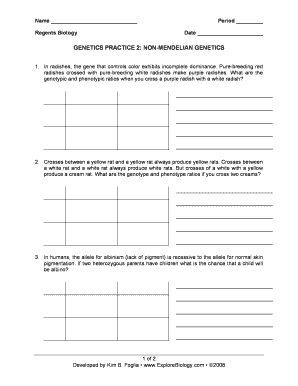Non-Mendelian genetics refers to inheritance patterns that do not follow Mendel’s laws of inheritance. In these cases, traits are not determined by a single gene with two possible alleles, but rather by multiple genes or other factors such as environmental influences. Some examples of non-Mendelian inheritance include incomplete dominance, codominance, and polygenic traits.
When completing a practice worksheet on human genetics focusing on non-Mendelian traits, it’s important to understand the complexities involved. Students may be asked to analyze Punnett squares for traits that exhibit incomplete dominance or codominance, or to consider the impact of multiple genes on a particular trait. These exercises can help reinforce the concept that genetics is not always straightforward and predictable.
Human Genetics Practice Worksheet Non Mendelian
Practical Applications of Non-Mendelian Genetics
Studying non-Mendelian genetics is not just an academic exercise; it has real-world applications in fields such as medicine and agriculture. Understanding how traits are inherited in a non-Mendelian manner can provide insights into complex genetic disorders and help develop more effective treatments. In agriculture, knowledge of non-Mendelian inheritance can be used to breed plants or animals with desired traits.
Practice worksheets that focus on non-Mendelian genetics can help students develop critical thinking and problem-solving skills. By working through scenarios involving complex inheritance patterns, students can enhance their understanding of genetic concepts and improve their ability to analyze and interpret data. These skills are valuable in a wide range of scientific disciplines and can prepare students for future studies and careers in genetics.
